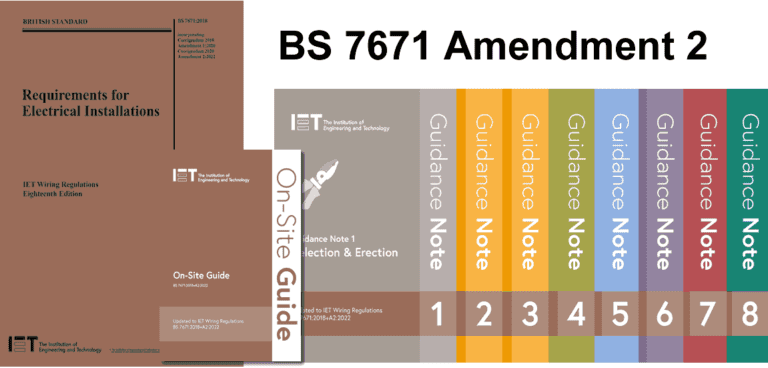AFDD’s Arc Fault Detection Devices – Do we need them?
AFDD’s Arc Fault Detection Devices
There seems to be mixed opinions with the introduction of Arc Fault Detection Devices commonly known as AFDD’s introduced into the 18th edition UK wiring regulations.
Many articles state that AFDD’s are ineffective on ring main circuits, which in a domestic property could mean that an AFDD would only apply to shower circuits, cooker circuits and lighting circuits, basically all radial final circuits only, therefore could AFDD’s mean the end of ring final circuits on new installations which to be honest can only be a good thing right?
We are all aware of the problems with ring circuits, some being altered by the DIY expert so now the ring main circuit is no longer a ring circuit, now it’s two radial circuits on a 32 amp MCB with multiple spurs from spurs from spurs, but that’s a whole blog post on it’s own for another day.
AFDD’s and Nuisance Tripping
As we know with RCD’s and RCBO’s the term “Nuisance Tripping” or “Unwanted Tripping” is fairly common. Possible causes of nuisance tripping could be an ageing fridge freezer for example. Will we have the same issue with Arc Fault Detection Devices?
A final circuit protected by an RCD and an AFDD could cause a lot more nuisance and unwanted tripping. Of course if an RCD, RCBO or AFDD trips then it’s doing it’s job as intended but for the end user it could just be an annoyance to them but at the end of the day safety has to come first.
Three Phase AFDD Arc Fault Detection Device
From our online research we were unable to find any Three Phase AFDD’s, therefore do AFDD’s only apply to single phase circuits, or perhaps the manufactures haven’t produced a three phase AFDD yet? Once the manufactures produce a three phase Arc Fault Detection Device could we see an amendment to BS 7671 being released?
What is an AFDD?
AFDD stands for Arc Fault Detection Device and it detects arc faults on a circuit, if an arc fault is detected by the AFDD then it will trip. The idea is to offer additional protection against the risk of fires caused by arcing connections for example.
Are AFDD’s Compulsory?
From what we can gather it seams currently AFDD’s are recommended but not a compulsory (subject to change). When RCD’s where first introduced it started with only being required for sockets which could supply equipment outside, then all sockets, then all cables buried less than 50mm in the wall without suitable earthed mechanical protection, now basically almost everything is RCD protected. We can see the requirements of AFDD’s going the same way as RCD’s over the coming years.
BS 7671 Amendment 2 AFDD Requirements
** UPDATE March 2022: ** Continue reading to the end of this post for details on the changes implemented by Amendment 2 of BS 7671 in relation to AFDD requirements.
AFDD Testing Demo Video
AFDD Video by Eaton.
AFDD Documentation
For more information on AFDD’s download the AFDD guides below.
Bema Guide to Arc Fault Detection
Eaton AFDD Range Brochure
AFDD Manufactures
There are many manufactures of AFDD’s now which include,
- Fusebox
- Hager
- Click
- Eaton
- ABB
- Shhneider
- Wylex
- MK Sentry
- Axiom
- BG Fortress
An Arc Fault Detection Device is referred to as an AFDD in the UK, in other countries these might be referred to as an Arc Fault Breaker or Arc Fault Circuit Interrupter.
AFDD’s and Amendment 2
Amendment 2 (2022) of BS 7671 states AFDD’s confirming to BS EN 62606 shall be provided for single-phase AC final circuits supplying socket-outlets with a rated current not exceeding 32 Amps in higher risk residential buildings (HRRB), houses of multiple occupation (HMO), purpose built student accommodation and care homes.
For all other premises, the use of ADFF’s is recommended for single phase AC final circuits supplying socket-outlets not exceeding 32 Amps.
Higher risk residential buildings include residential buildings over 18 meters in height or with more than 6 stories, which ever is met first.
It is anticipated that the higher risk residential buildings definition is likely change overtime, so be sure to check the current definition of higher risk residential buildings in-case it has changed since you last checked, it is likely to extend the scope of the definition to include additional buildings / building types to the requirement for the installation of AFDD’s.
Definitions
HMO: Houses of Multiple Occupation
A HMO might be described as residential rental accommodation where each bedroom is individually let to different people.
HRRB: Higher Risk Residential Buildings
Higher-risk buildings are currently defined by their height and use. These internationally used factors are an industry-accepted way of identifying buildings where the consequences from a fire or a structural failure can be significant.
AFDD: Arc Fault Detection Device
An AFDD is short for Arc Fault Detection Device, an A.F.D.D. is a device which interrupts the electrical supply if an arc fault is detected. The magnitude of the arc fault to cause the AFDD to trip the is set by the manufactures depending on the BS EN standard of the AFDD.






